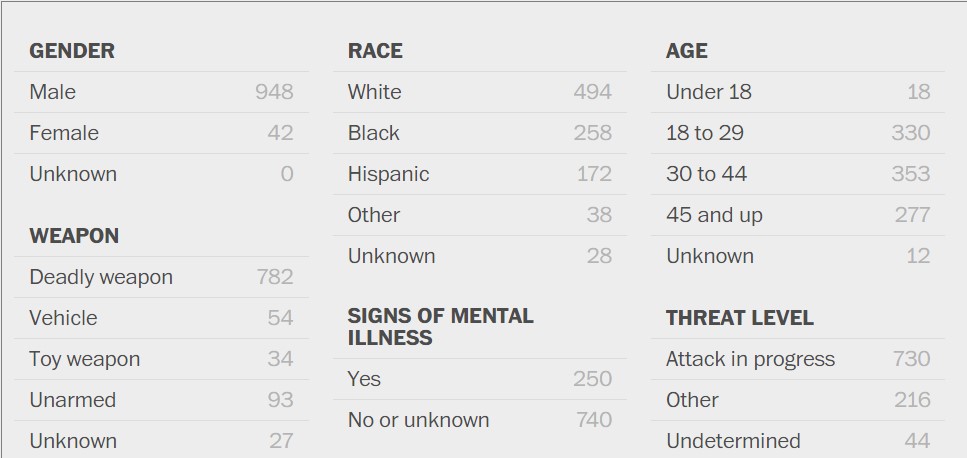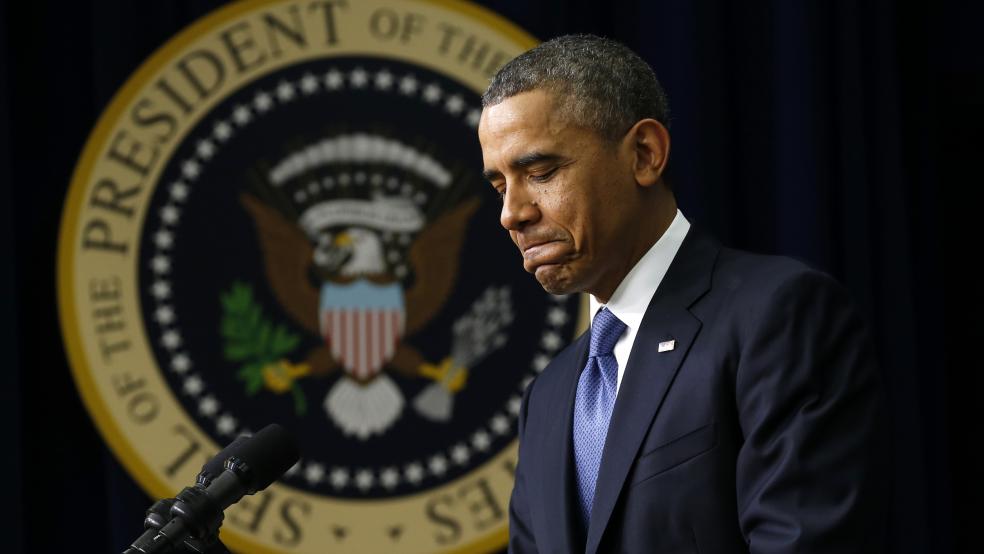At the Democratic National Convention that nominated then Senator and now Secretary of State John Kerry for president in 2004, a rising young politician from Illinois delivered a speech that electrified even the most jaded journalists slouching in the press seats.
“…There’s not a liberal America and a conservative America — there’s the United States of America. There’s not a black America and white America and Latino America and Asian America; there’s the United States of America,” he said. “The pundits like to slice-and-dice our country into Red States and Blue States; Red States for Republicans, Blue States for Democrats. But I’ve got news for them, too. We worship an awesome God in the Blue States, and we don’t like federal agents poking around our libraries in the Red States. We coach Little League in the Blue States and have gay friends in the Red States. …We are one people, all of us pledging allegiance to the stars and stripes, all of us defending the United States of America.”
The soaring, stirring rhetoric delivered with style and grace signaled to many that they were witness to a singular political moment – the launch of a national career whose unlimited trajectory could only be imagined.
Related: The Biggest Racial Problem No One Talks About
Four years later, after a bruising primary battle with Hillary Clinton, the tall slim senator who had thrilled the crowd in Boston stood on a similar stage in Denver and accepted his party’s nomination for president.
Again, that was an American moment ripe with promise. The nomination of the son of an African father and a white American mother, who had come from nowhere, bested a powerful political machine and claimed the Democratic mantle as he sought the highest office in the land.
If Barack Obama represented one thing in 2008, it was the heartening hope that the country was transcending the racial divisions that had polarized it during the civil-rights protests that started in the 1950s; the snarling dogs of Birmingham in 1963, the inner city riots in places like Harlem, Watts and Newark; the Black Power movement; the looting and disruptions in Brooklyn’s Crown Heights in 1991; the beating of Rodney King and the mayhem in Los Angeles in 1992; and so many other symbols of national discord.
In March of that election year, in reaction to racist and incendiary remarks by the pastor of the church he had long attended, Obama delivered a speech on race in Philadelphia called, “A More Perfect Union.”
Related: NAACP Head: ‘We Know What to Do’ About Police Shootings
He said in part:
“I have asserted a firm conviction — a conviction rooted in my faith in God and my faith in the American people — that, working together, we can move beyond some of our old racial wounds, and that in fact we have no choice if we are to continue on the path of a more perfect union.
“For the African-American community, that path means embracing the burdens of our past without becoming victims of our past. It means continuing to insist on a full measure of justice in every aspect of American life. But it also means binding our particular grievances — for better health care and better schools and better jobs — to the larger aspirations of all Americans…
“In the white community, the path to a more perfect union means acknowledging that what ails the African-American community does not just exist in the minds of black people; that the legacy of discrimination — and current incidents of discrimination, while less overt than in the past — are real and must be addressed, not just with words, but with deeds, by investing in our schools and our communities; by enforcing our civil rights laws and ensuring fairness in our criminal justice system; by providing this generation with ladders of opportunity that were unavailable for previous generations.
“It requires all Americans to realize that your dreams do not have to come at the expense of my dreams; that investing in the health, welfare and education of black and brown and white children will ultimately help all of America prosper.”
Eight years later, the America that Obama intended to help unite is arguably more divided than when he took office, and the racial wounds that seemed to be healing are open and raw again.
Related: Tragic Shootings Bring Out the Best in Trump and Gingrich
How did we get from there to here? To a nation waking up on a morning in July to two more black men dead after incidents that should have been insignificant entries on a police blotter and five cops slaughtered in a racially motivated bloodbath in Dallas.
Certainly ill-advised statements by Obama and former Attorney General Eric Holder have fanned the flames of racial resentment. But so have the bleating sheep of social media who lump incidents of violence against black men together despite vastly different details.
The current narrative of a cop war against African Americans began with the killing of Trayvon Martin, a young black man shot to death after a confrontation with George Zimmerman, a Hispanic member of an unofficial neighborhood patrol, in Sanford, Fla., on Feb. 26, 2012.
The president’s statement after the killing set the tone when he declared that a young Obama could have been Trayvon Martin, and he continued to approach the tragedy in racial terms.
So did Holder. In a speech to an NAACP convention in July 2013, following Zimmerman’s acquittal in a state murder trial, the first African American attorney general held up Martin’s death as an example of the unequal treatment of blacks by the police.
Related: Obama Disappoints the Black Community and the Country
Obama followed suit at a press conference a few days later. He said in part:
“There are very few African American men in this country who haven't had the experience of being followed when they were shopping in a department store. That includes me. There are very few African American men who haven't had the experience of walking across the street and hearing the locks click on the doors of cars. That happens to me -- at least before I was a senator. There are very few African Americans who haven't had the experience of getting on an elevator and a woman clutching her purse nervously and holding her breath until she had a chance to get off. That happens often.
“And I don't want to exaggerate this, but those sets of experiences inform how the African American community interprets what happened one night in Florida. And it’s inescapable for people to bring those experiences to bear. The African American community is also knowledgeable that there is a history of racial disparities in the application of our criminal laws -- everything from the death penalty to enforcement of our drug laws. And that ends up having an impact in terms of how people interpret the case.”
Everything the president said was and still is true. Blacks have been prosecuted more forcefully and incarcerated far more frequently than whites, often for non-violent crimes. And he spoke candidly about young African American men being disproportionally involved in the criminal justice system both as perpetrators and victims. Still, he said, “if a white male teen was involved in the same kind of scenario [as Trayvon Martin]… from top to bottom, both the outcome and the aftermath might have been different.”
PEOPLE SHOT DEAD BY POLICE IN 2015-The Washington Post

Source: The Washington Post
But after three years of trying, the Justice Dept. of Barack Obama and Eric Holder was forced to abandon a federal prosecution of Zimmerman for violating Martin’s civil rights and concede that, as Holder said, “the high standard for a federal hate crime prosecution cannot be met under the circumstances here.”
Never mind that Zimmerman was not a police officer. The damage was done, the story line set.
Related: Clinton Calls for Drug Sentencing Reforms, End to Racial Profiling
Of course, police officers across the country have done more than their part to provide evidence that there actually is a deadly cop war against African Americans. The shootings of Alton Sterling in Baton Rouge on July 5 and Philando Castile in Falcon Heights, Minnesota, a day later are still under investigation but have sparked outrage and are purportedly the catalyst that led to the mayhem in Dallas by an angry black Army veteran, Micah Johnson.
They come after a string of recent incidents in which African American men were shot to death by police officers under questionable circumstances. In a number of those cases, charges ranging from involuntary manslaughter to murder have been filed against the police officers involved, and there have been many other instances of blacks dying at the hands of cops whose lives were not threatened.
Research by Heather MacDonald of the Manhattan Institute argues against many of the conclusions of the Black Lives Matter movement, but in the end, passions overwhelm statistics. While the data points may be accurate, they are not going to change minds already made up.
As a wounded, confused and polarized America approaches the presidential election in November with a candidate on one side who encourages attacks on black protesters at his rallies, the hope for healing that so many held in their hearts when the president was elected in 2008 is all but gone.
The truth is it was unrealistic to expect that one man could change the country’s history of troubled race relations.
In his Imperfect Union speech in 2008, Obama said:
“This is where we are right now. It's a racial stalemate we've been stuck in for years. Contrary to the claims of some of my critics, black and white, I have never been so naïve as to believe that we can get beyond our racial divisions in a single election cycle, or with a single candidacy - particularly a candidacy as imperfect as my own.”
He was right.






